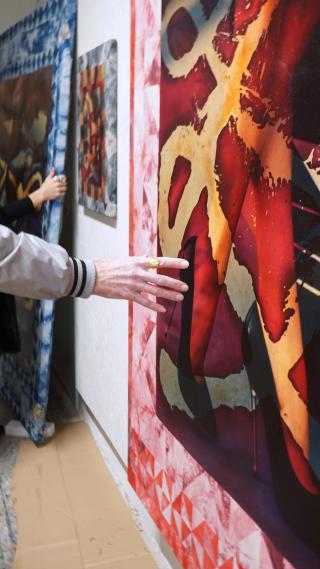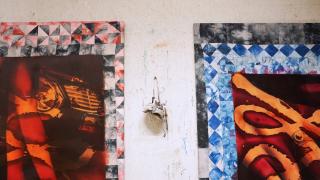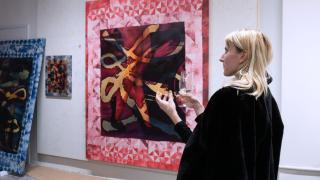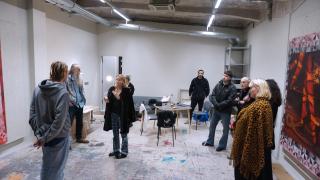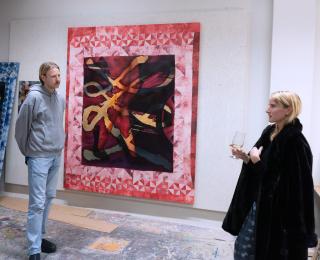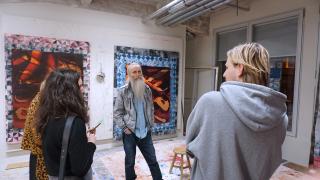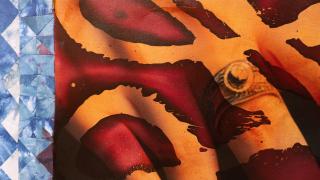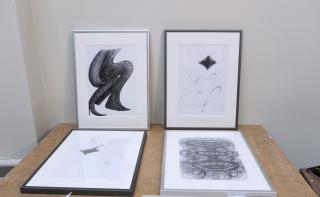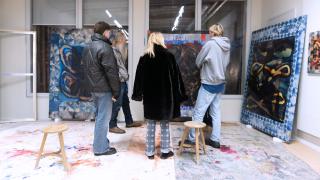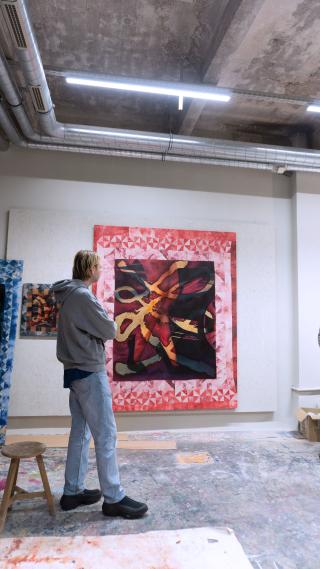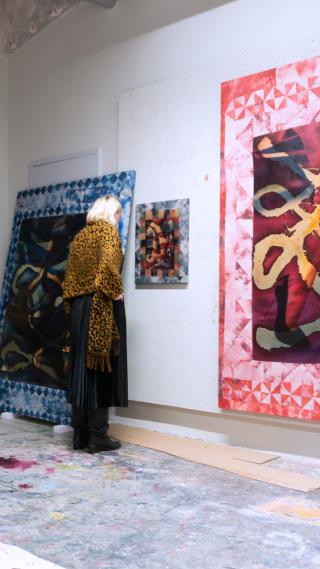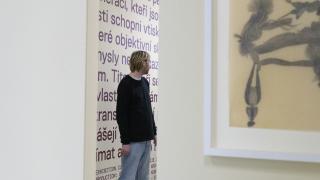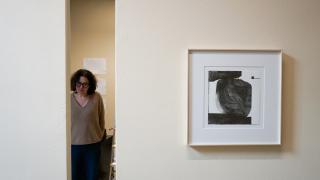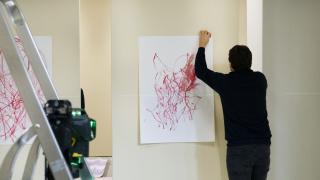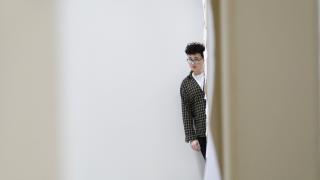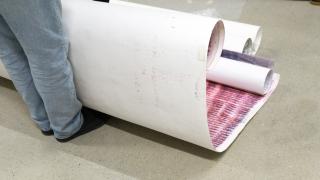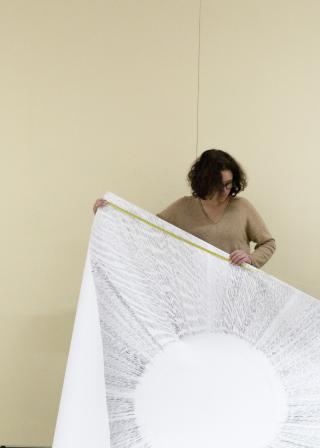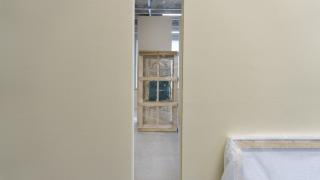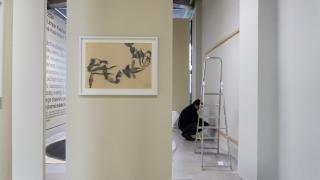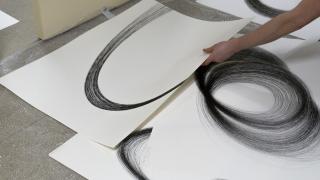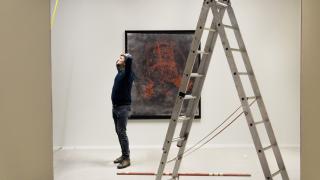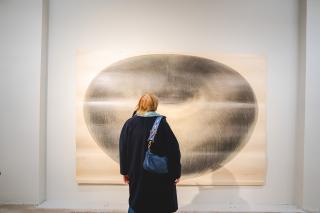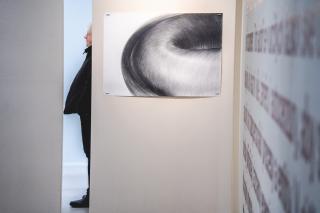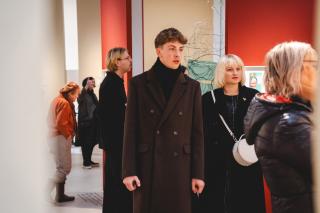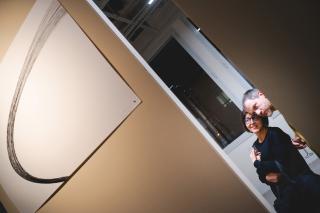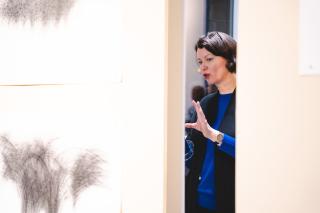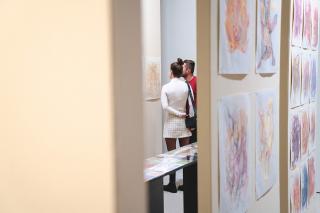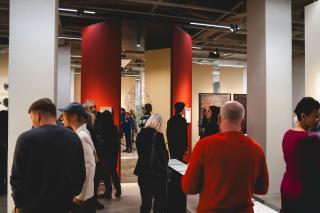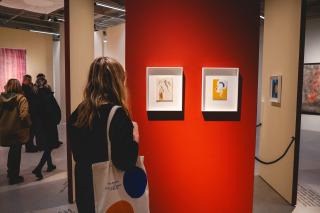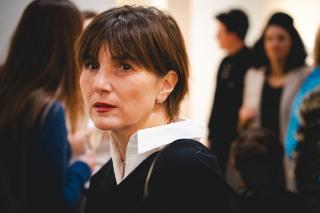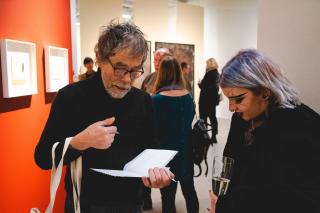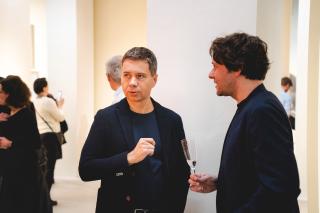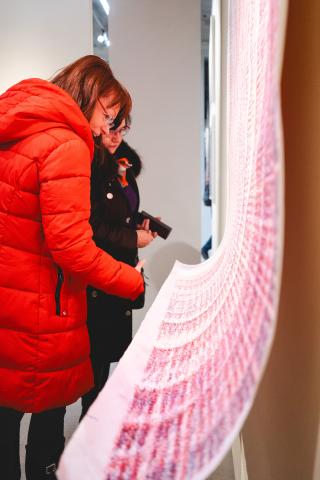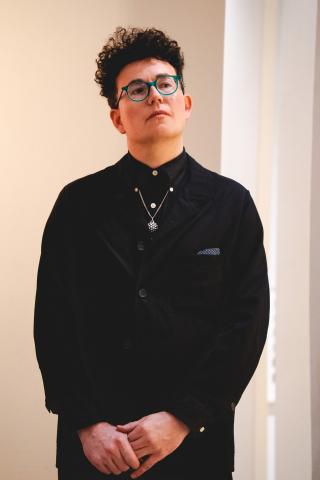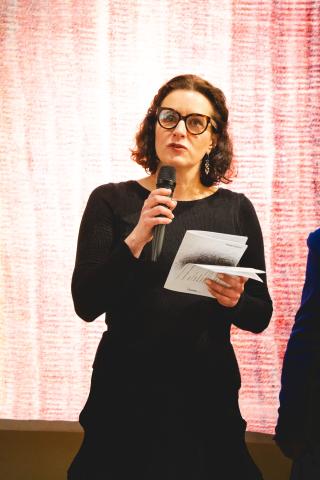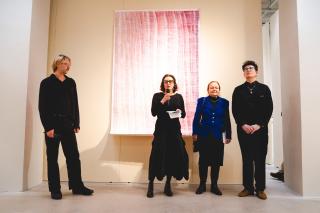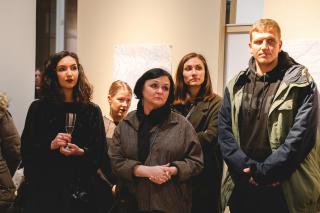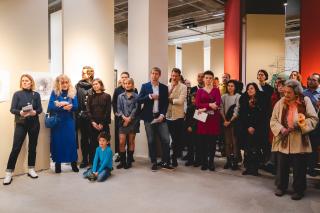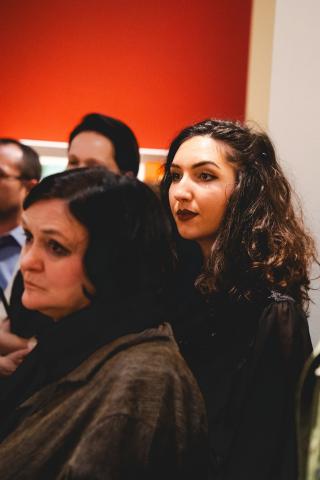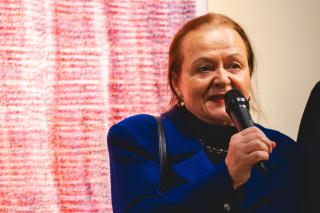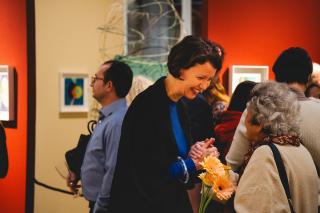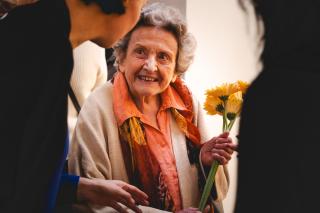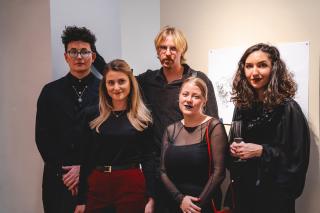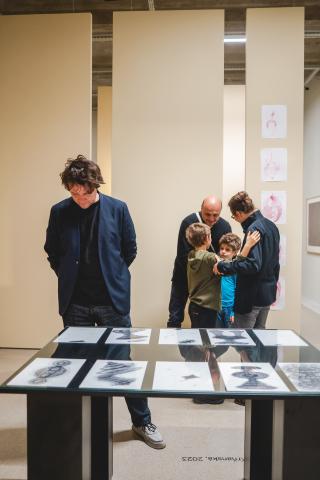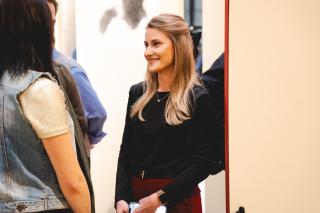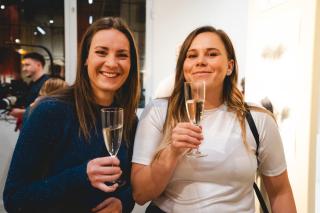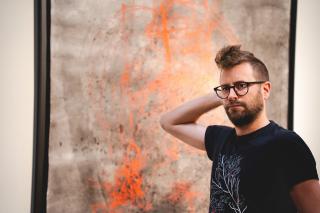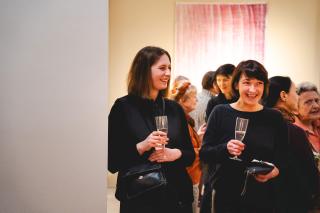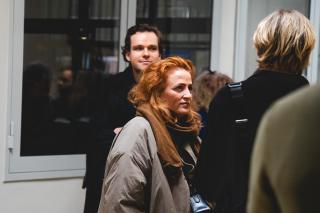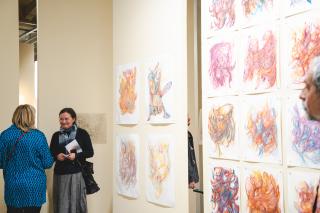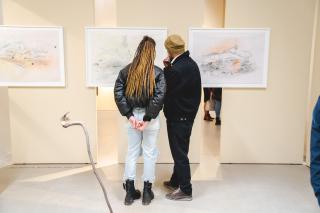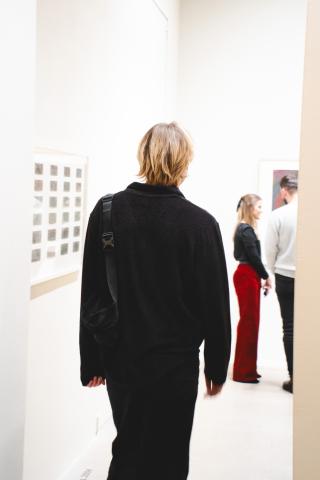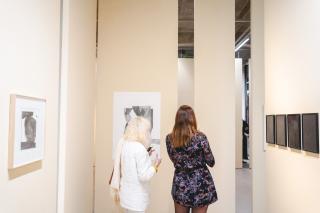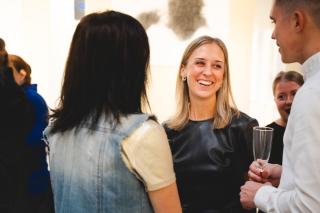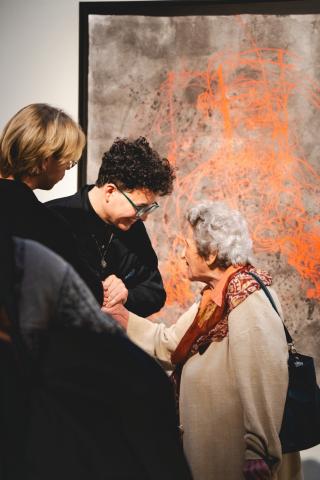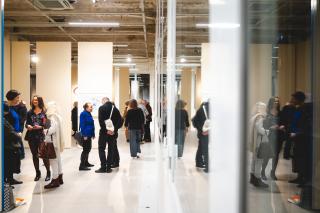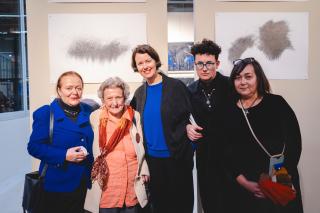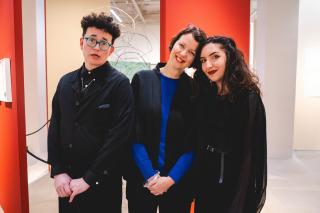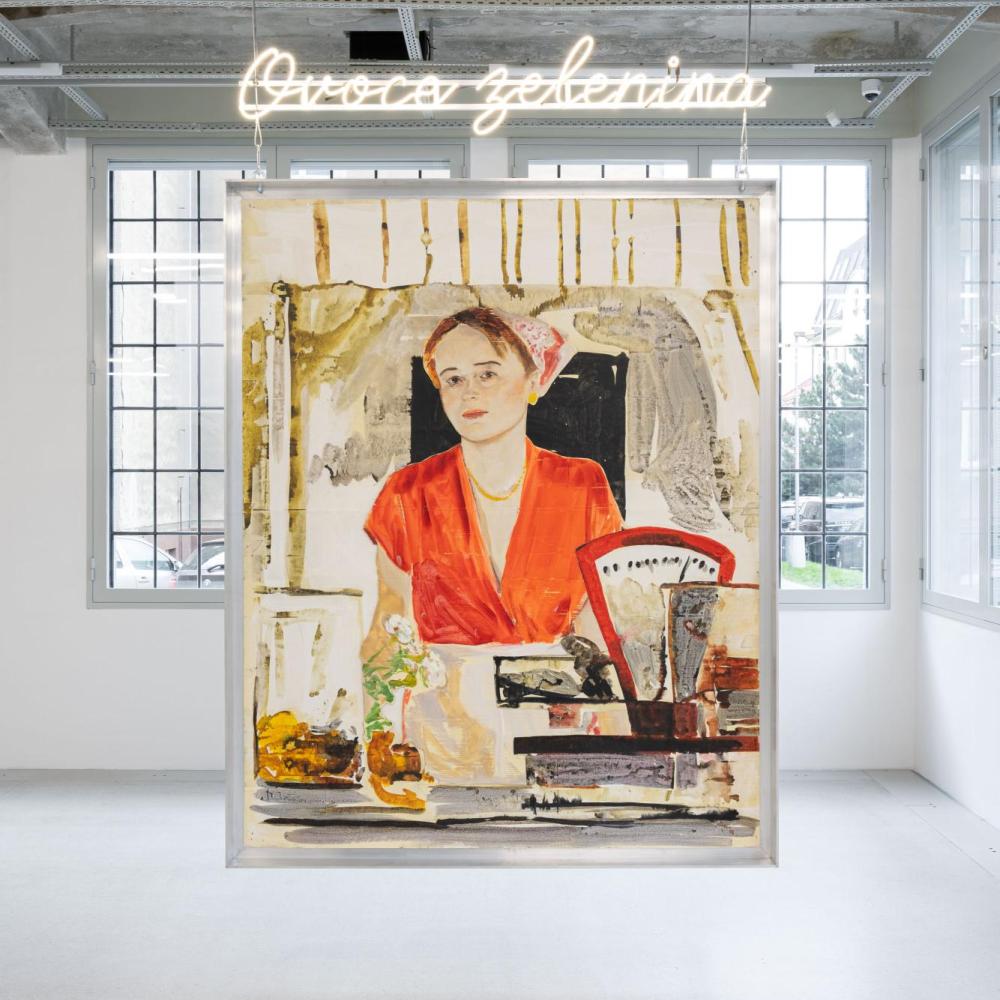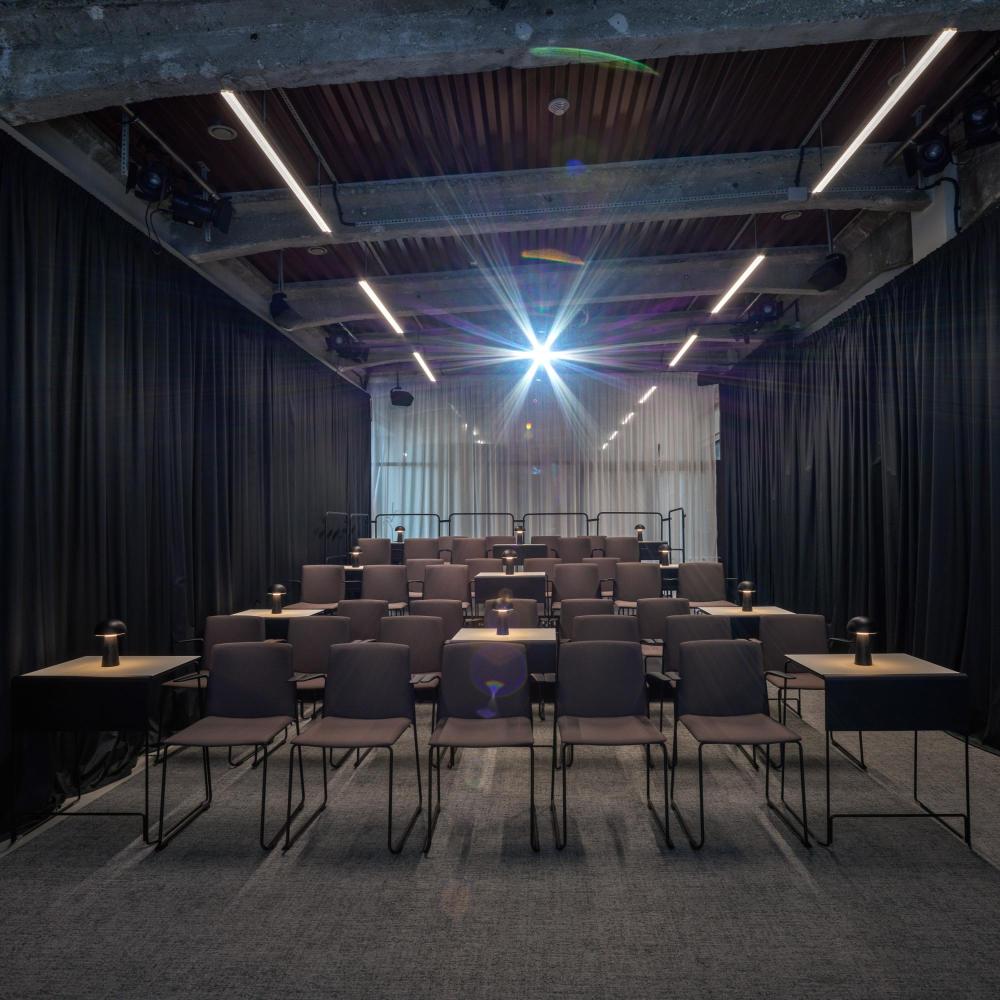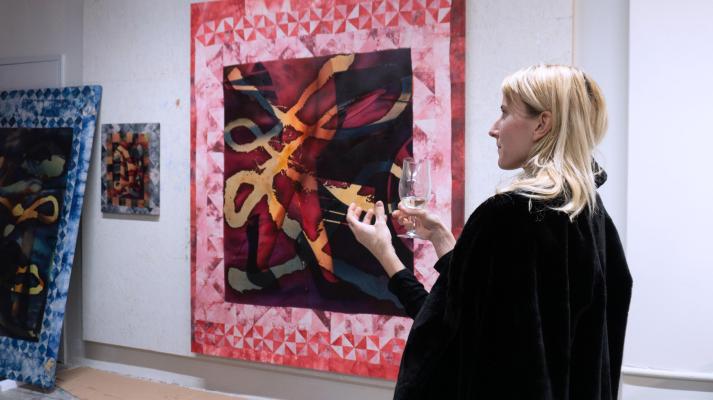
Alžběta Krňanská is a Czech artist, active also on the foreign scene, especially in Greece, where she lives and exhibits her works full of current topics such as gender roles, everyday life in our world, contrasts between private and public life and others. Her career began at the theatre department of the Academy of Performing Arts, where she studied scenography, dramaturgy and performance, and continued with painting studies at the UMPRUM, during which she gained experience from Justin Fitzpatrick, for example, as well as in the studio of Christopher Ruckaberle and Maria Schumacher. The motifs of her abstract works are associated with typography, clear and rapid expression, installations in space, and she draws inspiration mainly from objects of common use, Greek architecture and, last but not least, from her mother's view of our time. Her work has appeared in the renowned Greek gallery The Breeder Gallery, MISC AThens, American Institute of Greece, as well as in Wroclaw Drawing Triennale, Prague Art Week and SPIKE magazine. He has been in residence at the Telegraph since November and we asked a few questions.
Defining an artist who places a high value on fluidity and constant evolution can be difficult. Yet, I ask, what role stands out in your artistic life and what is the basis of this creative identity?
For me personally, among other things, it has to do with motherhood, which is actually one big transformation. You have to constantly adapt, adjust to new things and situations, and that's how it is with my work at the moment. Otherwise, to continue to push myself and my limits, to learn new things and experiment - that's important to me both personally and in my work, and that's how it fulfills me at the moment.
The themes of gender, feminism, the everyday use of objects and guarded privacy feature prominently in your work... Can you tell us more about these themes?
Unless these themes affect a person personally, they don't think much about them. For me, at this stage in my life, and in my work, they are very topical and personal. I see feminism as an important part of the public debate. Unfortunately, it is not easily definable and takes many forms. It's not about making excuses for men, but about achieving equal opportunities and definitely having the right to make decisions about your body. The theme of safety and some boundaries/barriers is linked to both motherhood and the state of the world and society we live in. I observe these barriers in both the real and online world and try to compare the two. Of course, when a woman becomes a mother, this feeling of protection and security is even more intense. And we have to shape the world we want for our children together.
Do you feel like your views on these issues change over time? And do the techniques you use reflect that change?
Sure. Humans are constantly evolving and redefining their views on many things. I am more aware of certain nuances in society in terms of gender, motherhood, the role of women, etc. Even though we talk about these topics quite openly, implementing them in everyone's real life is a very challenging task. The technique I work with creates layers on the canvas that the viewer can gradually uncover. So the same image can be viewed in different ways and see something a little different each time. In the end, it's just a matter of point of view, both in content and form... literally...
When I watched the visual evolution of your paintings, I feel there is a noticeable difference. For example, the 2020 Twentytwenty series is full of fragility, bright colours and overall has a very gentle effect on me. Compared to the recent Too hot to think and Unexpected encounters, which abound with more deeper design, darker colours and complexity. Does this change reflect anything? Perhaps the urgency of your usual themes?
So much has happened between 2020 and now, and I feel like the world has started to go dark since then. One horrific event follows another, so I'm sure my work reflects that in some way... At the same time, it's very much a kind of "current state" of my personal life, which has been going through different phases in recent years. With more time, I am also dealing more and more intensively with certain topics.
You live alternately in the Czech Republic and Greece, where you also exhibit frequently. Could you elaborate on some of the differences, both in the art scenes and in the general atmosphere of the two countries?
In Greece I feel that everything is somehow simpler. You get an idea and it's quite realistic to realise it, whether it's the space or the support of other artists, curators. With the financial side it's more challenging. There are collectors, but there are not many of them, and they are mostly connected to the gallery system, which is rather the opposite here. In the Czech Republic, it is still easier to work as a solo artist, without gallery representation. Otherwise, I find the scene itself more optimistic and open, it's a bit depressing here...
The dominant theme in your work is the notion of feminine energy and the female body, which society has viewed differently over time. For example, do you have favourite female authors dealing with similar themes? And do you find any additional inspiration in them?
I have a number of favourite female artists who work with similar themes. For example, I recently saw an exhibition in London by the artist Sarah Lucas, who was showing some great objects made up of fabric legs intertwined with chair heels, I enjoyed that a lot. Then there's Louise Bourgeois or Isabelle Albuquerque, who works with female sexuality.
You work a lot with textiles, beeswax, metal and many other materials and techniques. What tool or process is most prevalent in your work right now? Do you have any new discoveries in these techniques?
I combine natural materials, textiles and for the last few years I have added digital printing to my work. In general, though, I try to reduce the materials and sort out what really makes sense to continue working with. I've been doing textiles for a long time before painting itself, so combining them with painting is more of a logical step. At the same time, I enjoy rediscovering and experimenting with traditional craft techniques such as textiles, metal work, or knitting and combining them with new technologies.
Can you describe the technical process of creating your pieces?
Because I travel quite often, I have adapted my work so that I can always prepare the different stages, even when I am not in the studio. So I can do some part of it on the computer from anywhere and then move another part to the studio. The basis is a rather intricately constructed textile substrate, which I sew together from small pieces and then I stretch it and start painting on it. It is therefore demanding both in terms of skill and time, but it suits me in this way and also gives me the space to think more about the individual pieces.
How do you rate your residency at the Telegraph, both creatively and subjectively?
I really enjoyed the residency. It's a great space with all the necessary facilities on a very professional level. You can fully commit to the work and there's a great team of people. I have been preparing new paintings here, some of which will be exhibited in the Humpole 8smička gallery in March 2024.
A slightly more traditional but no less important question concerns your upcoming projects. Do you plan to continue to paint, install and work with metal, or do you want to experiment with other media? Alternatively, what themes are important to you in the future?
During the residency, in addition to the works themselves, I created a number of drawings, proposals and notes for the creation of other paintings. I also want to work on creating objects out of recycled car bonnets, which will be created alongside the paintings from 2020 onwards. From the new year onwards I will be focusing more on solo projects, so there will definitely be some interesting installations.
